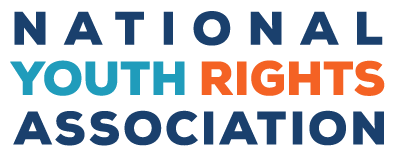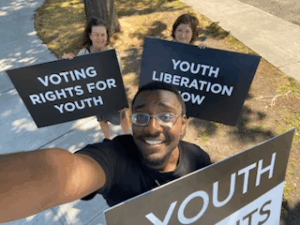The lyrics, “Alcohol my permanent accessory, alcohol a party-time necessity, alcohol alternative to feeling like yourself, oh alcohol I still drink to your health” Can be heard in a familiar song titled “Alcohol” by Barenaked Ladies. This song shows how deeply alcohol has embedded itself in our society and our lives. Some may regard this as a morally corrupt side of society, but the fact is that alcohol has taken a major role in our culture, a role that has continued to change throughout time. Drinking is a privilege that has been in this country since its founding. It was briefly taken away during prohibition, but society’s favor of alcohol showed its strength with the repeal of prohibition. After prohibition, alcohol was legally available to any adult, but recently, in 1984, legislation was started to restrict alcohol to only adults twenty-one years of age and older. This legislation was finished, and fully installed in our country in 1987, depriving many adults across the country the privilege of being able to consume alcohol. The drinking age should be changed back to the age of adulthood.
Many groups claim that the age of twenty-one should be held as the standard drinking age. Support for this argument is often bases on statistics and information that is more effected by other circumstances and laws other than the drinking age. In addition, some support given by these groups is based on moral issues that turn their argument into a moral argument as opposed to a legitimate argument that can be supported by facts.
One argument against lowering the drinking age is that alcohol impairs the development of the brain. MADD (Mothers Against Drunk Driving) stats in an article titled “Why 21” that “the 21 minimum age drinking laws were established to save your brain and your life” (Why 21?) Although it is standard knowledge that the manner in which alcohol is consumed is generally unhealthy, there are many other substances legal to any age that are just as unhealthy. It is a wide known fact that heart disease is the number one killer in America. Heart disease is cause by unhealthy and fatty foods, which are consumed everyday by nearly everyone. If the American Heart Association were to use the same reasoning as MADD, They might suggest putting age restrictions on buying McDonald’s fast food. In reality, such suggestions by the AHA would be shot down faster than an Iraqi fighter-jet in US air space. Further more, cigarettes have been proven to be the major cause of lung cancer. Any adult can purchase a pack of Marlboro cigarettes at a store legally, despite the fact that the nicotine that they contain is far worse for your body than alcohol. When was the last time you heard of a class action suit against Budweiser for causing cirrhosis of the liver? Never! That is why it is preposterous to even try to defend the “twenty-one” age restriction on alcohol with health related support.
Another reason Given by MADD for the “twenty-one” age restriction is that “Researchers found that teenage deaths in fatal car crashes dropped considerably – in some cases up to 28% – when the laws were moved back to 21. Like it or not, it is clear that more young people were killed on the highways when the drinking age was 18.” Granted, with this statement MADD has risen slightly above their childish health argument, however, they are not looking at the big picture with this statistic.
Any law that restricts the use of alcohol is going to decrease the number of drunk-driving related accidents. It would be only natural for a decrease in the number of drinkers to result in the decrease of the number of drunk drivers. The fact is, that they have misjudged the cause of drunk driving. Studies would show, that if laws regarding drunk driving, not the drinking age, were tightened, instances of drunk driving, and thus deaths in “fatal car crashes” would be reduced. I ask, are teenagers dying in non-fatal car crashes? And is there a reason as to why MADD chose to make this distinction? Could it be that MADD has not only made a few mistakes in simple grammar, but also in its argument?
In addition to this, data collected by US DOT NHTSA (National Highway Traffic Safety Administration) has shown that between 1982 and 1987 there has been a reduction in the number of accidents related to intoxicated drivers (NHTSA). The number of alcohol-related accidents were already dropping before the age restriction laws were in place [See Appendix A]. Also, after the laws were instituted in 1984, there was a slight rise in the number of alcohol-related accidents between 1985-1986, and 1989-1990. Also, Hans Joksch notes in his book, “during the period 1980-1985, drunk driving declined” (Joksch 13). Although the number of alcohol related accidents has dropped since the enactment of the “twenty-one” age restriction, the decrease is not entirely due to the new laws, but simply a trend in less drunk driving that started much earlier. As show by Joksch’s data, drunk driving was already on the decline from the start of his data collection in 1980. Drunk driving was already dropping regardless of the “twenty-one” age restriction, despite what MADD has tried to make people believe. MADD has attempted to deceive the American public by hiding behind partial statistics.
Another study has proven that “in the 12 zero tolerance states, single vehicle nighttime fatal crashes involving young drivers dropped 16 percent” (NHTSA Tolerance) The young drivers, defined by this study as under twenty-one, are not even supposed to be under the influence, but simply by enacting zero tolerance laws on drunk driving, fatal accidents have declined by another solid sixteen percent. MADD claims that the “twenty-one” age restriction has reduced the number of fatal accidents by up to twenty-eight percent, not even a solid twenty-eight percent. If zero tolerance laws were established, as opposed to age restricting laws, these decreases in the number of accidents would be higher than a pothead on April twentieth. MADD needs to take up anger management to stop targeting the wrong statistics.
One group, The Center for Science in the Public Interest, in order to support their argument to keep the drinking age at twenty-one, asserts that, “If 18 year-olds can legally drink, their immediate, younger peers will drink too” (CSPI). It is already apparent that teenagers below eighteen drink alcohol even with the current laws. Not all parents are in touch with their children well enough to stop their child from drinking. This is a constant problem not associated with the drinking age. If the children are not currently drinking because of the “twenty-one” age restriction, it is more than likely that they live with their parents, who have established and uphold rules as to their behavior and activities. Parents need to be more involved with their children to keep them away from any activities that they parents deem inappropriate. Setting the drinking age to twenty-one does not help promote stronger involvement of parents in the life of their kids to stop drinking. If a teenager drinks at age fifteen already, then obviously the age limit of twenty-one does not work to stop young teenagers from drinking. CSPI cannot attack the lowering of the drinking age by saying that people under the age of eighteen will start drinking. In fact, people under age eighteen are currently drinking when the drinking age is set to twenty-one. There will always be a number of people that stat drinking at a very young age, regardless of the drinking age. That would be like saying, “do not lower the restrictions on crossing the Mexican border or we will have illegal Mexican immigrants!” The fact is, we already have illegal Mexican immigrants and we will have them no matter how stringently we restrict the border.
Although CSPI’s entire web site is based around health issues, there is nothing on their web site that says, “If 18 year-olds can legally smoke, their immediate, younger peers will smoke too.” If the age restriction of eighteen is good enough for cigarettes, why must it be different for alcohol? Is there something saying that young adults will purchase more alcohol than cigarettes for minors?
Another Argument against Alcohol is “Binge Drinking” and the associated problems with binge drinking. Although binge drinking is a problem, it is only aided by the higher age restrictions. Since alcohol is not always available, when it is encountered, it is going to be consumed in large quantities. Consider this: if it was illegal for you to buy a nice bottle of refreshing spring water, and you encountered a giant aluminum can fixed with a pump to pour the water at a party, would you not take advantage of your chance to drink some good clean water? This is what happens at parties. Young adults enjoy drinking alcohol and the social activities associated with it. Young adults cannot legally purchase alcohol, so when there is a big party every week or two where alcohol is available, they make up for it by drinking large quantities. Also, as stated in a newspaper argument “if young people were allowed to gather in a bar — where bartenders can stop serving drunken patrons, call cabs or make sure there are “designated drivers,” and police know where to patrol at bartime — we might actually curb binge drinking” (Leader). Looking at this example, bring drinking is obviously something that has been created by the age restrictions. Likewise, bring drinking could be ended if the drinking age was set to eighteen. If the drinking age was lowed, binge drinking would loose its appeal faster than Enron’s accountants could shred their paperwork.
Some of the reasons why the drinking age should be lowered have already showed up in the disproval of many arguments for the “twenty-one” age restriction. There are also many other reasons to lower the drinking age. One statistic given by the Center for Addiction and Substance Abuse claimed, “Underage drinkers consume 25 percent of the alcohol–most often beer–sold in this country” (CASA). The US Substance Abuse and Mental Health Services Administration later corrected CASA by reporting that the figure was actually closer to 11.4%, after the 25% figure was ran throughout the media (CASA). This is significant, because it shows how much of a market share for alcohol exists for people who would be effected by the lowering of the age limit. If 11.4% of the alcohol is consumed illegally, consider the economical implications of making it legal for adults 18 and older to buy alcohol. There would be increased consumer spending not only in alcohol, but also in other items related to drinking alcohol such as glasses, blenders, and even in books on how to mix drinks. This would all help aid the struggling economy by providing more jobs. Cops could also spend less time cracking down on underage drinking and more time on serious crimes and drugs.
Furthermore, a publication by the International Association of Chiefs of Police shows that the police in general have a basically accepting view of underage drinking. This publication states that “research has revealed that children in Italian-American and Jewish families are exposed to alcohol at a very early age…but grow up to have the lowest rates of alcoholism of any cultural group in the United States” (Enforcement 25). Clearly, being exposed to alcohol at an early age promotes a better relationship with alcohol and reduced health and social issues. Also, in support of this is the statement made in the same publication, which states, “some of the highest rates of alcohol addiction have been found in groups in which children are under strong pressure to refrain from drinking until they are 21” (Enforcement 25). Apparently, the introduction to drinking at an earlier age has a profoundly good impact on reducing alcohol addiction. If Adults, aged eighteen to twenty, are strictly forced to abstain from drinking, there will only be more problems associated with alcoholism in the years to come.
Another strong reason as to why the drinking age should be lowered is the fact that people are considered an adult at age eighteen. At age eighteen, men are required to register with the selective service for the purposes of drafting for the army. Although the draft is not in effect at this time, it could be enacted any day as war with Iraq approaches. Eighteen-year-old men could be forced to fight and die for their country without having the freedom to legally enjoy an alcoholic beverage. This is very troubling! Another argument along the same line is that at eighteen you can vote. Voting takes responsibility. If you are responsible enough to vote, you should be able to drink. If the government assumes that you are responsible enough to take up arms and fight for your country at eighteen, as well as vote, why then is it illegal to drink until you are twenty-one? Not to mention you can also smoke, gamble, face the death penalty, buy a gun, and much more at eighteen.
Furthermore, after age eighteen, adults are more likely to be moving away from their parents and more likely to be moving out away from the people who are most involved with shaping their lives. “Parents have a responsibility to teach their children the facts of life, but also how to use alcohol” (Foley 13). If the new adults are not taught how to handle alcohol under the supervision of their parents at the age of eighteen, when they move out on their own and are able to drink at age twenty-one, there will be nobody at home to stress good drinking behaviors and frown upon bad drinking behaviors. How can parents be expected to teach responsible drinking habits if their children will not be around when they start drinking? When parents are unable to teach their children how to handle alcohol, serious consequences can be expected.
Our country was founded on basic principles of freedom. The only real limitation on our freedom is that we can’t impose on the freedom of others; the act of simply drinking alcohol does not impose on the freedoms of others, only certain aspects of alcohol that result from irresponsible drinking imposes on other people’s freedom. By allowing the consumption of alcohol to be restricted to only adults twenty-one and older, we allow our freedom to be slowly taken away. If we sit back and allow this, what is next? Will we lose our right to drink altogether? We need to fight! In the words of The Beastie Boys, “You’ve got to fight for your right to party!” Why is it that in a country so full of freedom, do we have the highest drinking age of any country with restrictions on drinking, but yet the least stringent restrictions on drunk driving, the one aspect of drinking that is by far the worst (ICAP). We are showing the word that we are willing to take away people’s freedom of drinking, as well as the freedom of those killed by drunk drivers every year. We are setting the wrong example for freedom.
The drinking age should be changed back to the age of adulthood, eighteen. It was only until recently when the drinking age was set to twenty-one. This was the result of many groups placing blame upon the drinking age with false statistics. A blame that should have been directed elsewhere. We cannot put an age restriction on drinking for health reasons, otherwise we would have to restrict some of the food which we eat every day that is a far greater health risk. Drunk driving was already on the decline before the “twenty-one” age restriction, therefore, it cannot be used to support the age requirement. Even with the age requirement, young people are drinking, so increasing the drinking age has not stopped the consumption of alcohol by young teens just as lowering the restriction will not cause an overwhelming increase in the number of young teenage drinkers. This hardly anything that can help support the “twenty-one” age restriction. Lowering the drinking age will help stop binge drinking, help the economy, promote responsible drinking, parental involvement, decrease alcoholism, uphold the tradition of eighteen as the age of majority, and help sustain our freedom. The “twenty-one” age restriction was put into place by a noisy minority. It is now time to repeal this mistake with the noise of majority; we must fight for our right.
Appendix
Percentage of Drivers in Fatal Crashes with a BAC > 0.01% and BAC > 0.10%
Bibliography





